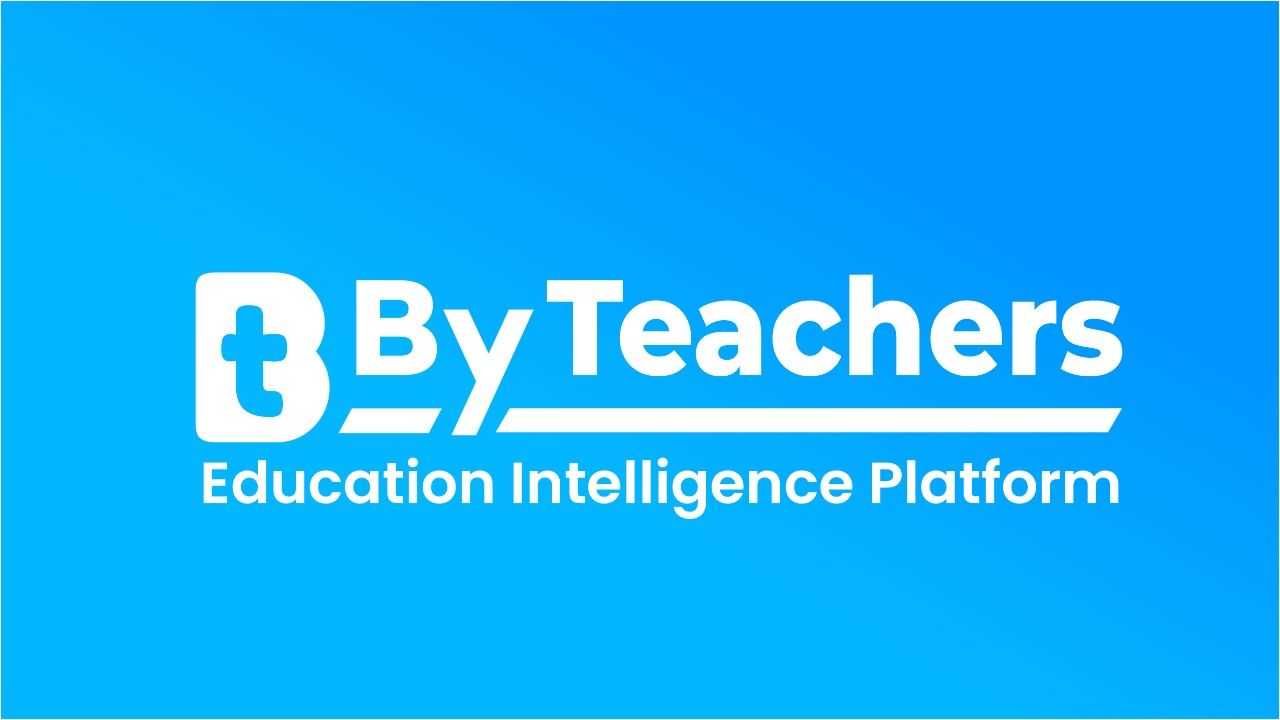What Is Online Teaching Software?
Online teaching software is a sophisticated tool that helps educators build, manage, and deliver virtual learning experiences. This sort of software enables teachers to connect with students in real time via a virtual classroom, allowing them to deliver lessons, assignments, and evaluations remotely. It also includes tools like video conferencing, screen sharing, and interactive whiteboards, which make the learning environment more participatory and engaging.
Furthermore, online teaching software frequently includes features for lesson preparation, grading, and student progress tracking, making it a complete solution for both teachers and students. One of the primary benefits of adopting online teaching software is its flexibility, which allows for learning to take place at any time and from any location, making it convenient for teachers and students alike.
With the rise of remote learning, online teaching software has become critical in bridging the gap between students and teachers, enabling continuous instruction despite distance or other impediments. Furthermore, many online teaching software provides multilingual support, making it more accessible to a broader range of students. When considering purchasing online teaching software, seek for a user-friendly interface and strong technical support.
Customizable functionality, smooth connection with existing learning management systems, and data security are all important considerations. Some software even includes advanced capabilities like virtual reality simulations and gamification opportunities to improve the learning experience. With so many options on the market, it is critical to thoroughly examine your own needs as an instructor as well as those of your students in order to choose the best online teaching software.
By incorporating this software into your teaching method, you may provide a dynamic and modern learning environment that matches the ever-changing needs of education. Whether you run a regular brick-and-mortar school, an online school, or a freelance instructor, investing in online teaching software is a wise decision for increasing student engagement and supporting effective virtual teaching.
What Are The Recent Trends In Online Teaching Software?
With the increased need for virtual learning and distant education, online teaching software has grown in popularity in recent years. This technological breakthrough has changed the way teachers give classes and interact with their students. As the market for online teaching software expands, buyers must stay up to date on current developments in order to make informed purchasing selections.
Here are some current developments in online teaching software to consider:
1. Integrating Artificial Intelligence (AI): One of the most significant advancements in online education software is the incorporation of AI technology. AI algorithms can assess data from students' progress to deliver individualized learning experiences. This includes adaptive learning, in which the software adapts the difficulty of classes based on the student's performance, and intelligent tutoring systems, which let teachers provide personalized feedback and support.
2. Mobile Compatibility: With the extensive usage of smartphones and tablets, online teaching software is now designed to work with mobile devices. This allows students to access course materials and engage in virtual classrooms from anywhere and at any time. Furthermore, mobile compatibility enables teachers to administer their classes and track student progress while on the road, increasing convenience and efficiency.
3. Gamification: To make learning more engaging and participatory, several online education software platforms are increasingly including gamification features. This includes using game-like features like points, badges, and leaderboards to inspire students and make learning more interesting. This tendency has been linked to increased student engagement and retention in virtual courses.
4. Collaborative Learning: Another trend in online education software is an emphasis on collaborative learning. Many platforms now include elements that encourage students to collaborate, such as discussion boards, group projects, and virtual breakout rooms. These technologies encourage students to collaborate, share ideas, and learn from one another.
5. Virtual Reality (VR) And Augmented Reality (AR): The use of VR and AR technology into online training software is gaining popularity. These immersive technologies create a more realistic learning environment and enable students to interact with course materials in a more engaging manner. It also allows for virtual field trips and hands-on learning, which is useful for disciplines that require both.
Benefits Of Using Online Teaching Software
Online teaching software has transformed the education business by making instructional content more accessible and efficient for both students and teachers. With the growing popularity of online education, these software solutions have become indispensable for schools, institutions, and even private teachers.
We will look at the advantages of using online teaching software and how to make an informed decision when selecting the best software for your teaching needs.
1. Access Anytime And Anywhere: One of the most major advantages of online teaching software is the ability to access your courses and resources from anywhere and at any time. Whether you're a student or a teacher, you can access your lessons, assignments, and evaluations from home or on the go. This not only provides flexibility, but also enables a more individualized learning experience.
2. A Cost-Effective Solution: Online teaching software is a less expensive option than traditional physical classroom teaching. It eliminates the need for physical classrooms, textbooks, and other educational resources, which are costly. Furthermore, online teaching software frequently includes subscription-based price plans, making it accessible for both large institutions and individual educators.
3. Interactive Learning Experience: Online teaching software includes a number of tools and features to help students learn more effectively. These can include interactive quizzes, multimedia presentations, and discussion boards, all of which improve the learning experience. It also provides real-time feedback, which is valuable to both students and teachers.
4. Personalized Learning: Every student has a unique learning style, and online teaching software enables tailored learning. The software can adjust to each learner's speed, presenting them with appropriate knowledge and tasks based on their strengths and shortcomings. This allows students to learn at their own pace while also providing a more personalized and effective learning experience.
5. Tracking And Assessment: Online teaching software has built-in tracking and assessment capabilities that help teachers monitor their students' progress. This can involve keeping track of attendance, grades, and assignment completion rates. In addition, students can track their own development and find areas for improvement, resulting in better performance.
6. Collaboration & Communication: Students and teachers can easily cooperate and communicate using online teaching tools. pupils can work together on group projects, and teachers can provide crucial information and comments to pupils. This is especially helpful for students who are unable to attend physical classes and must communicate remotely.
Important Factors To Consider While Purchasing Online Teaching Software?
When seeking to invest in online teaching software, there are numerous key elements to consider in order to make an informed decision. These characteristics will not only assist you in selecting the best software for your requirements, but will also ensure a smooth and successful teaching experience.
Here are some crucial aspects to consider when selecting online teaching software:
1. Features And Functionality: The first and most important considerations are the software's features and functionality. It should have the resources required for efficient online education, such as a virtual whiteboard, screen sharing, breakout rooms, interactive quizzes, and more. Make sure to analyze the options available and select those that are compatible with your teaching objectives and lesson plans.
2. User-Friendly Interface: The software's interface should be straightforward and simple to navigate and utilize. It should not require substantial training or technical knowledge to function, as this can detract from the educational experience. Look for demos or free trials to test the software and see whether it is appropriate for your teaching style.
3. Compatibility And Integration: Before purchasing any online teaching software, make sure that it works with your devices and operating systems. It should also be compatible with other teaching tools and platforms, such as video conferencing software or learning management systems. Compatibility and integration are critical in delivering a seamless teaching experience.
4. Security And Privacy: Because online education entails sharing valuable information and personal data, security and privacy should be prioritized while picking software. To safeguard your data and the information of your pupils, look for software that uses end-to-end encryption and adheres to industry-standard security measures.
5. Customer Support: Having dependable customer service is critical, especially when technical problems occur. Look for software that provides 24/7 customer service across numerous channels such as email, live chat, and phone. This will ensure that you get assistance whenever you need it without disrupting your teaching schedule.
6. Pricing: Finally, investigate the software's pricing alternatives. Some may provide fixed monthly or annual plans, while others may charge by the number of pupils. To determine which plan is ideal for you, consider your budget as well as the amenities available. These characteristics will help you choose the best online teaching software for your individual needs. Remember that the software you use should eventually improve your teaching experience and help your students learn effectively.
What Are The Key Features To Look For In Online Teaching Software?
When it comes to choosing online teaching software, there are numerous crucial features to consider to guarantee that you obtain the finest solution for your requirements. These features not only influence the software's overall performance, but they also have a significant impact on the user experience for both educators and students.
To help you make an informed decision, here are some key characteristics to look for in online teaching software.
1. User-Friendly Interface: The software's interface should be simple and intuitive to use. It should offer a smooth and seamless experience for both the teacher and the students, without requiring substantial training or technical understanding.
2. Interactive Tools: Look for software that has a variety of interactive features like whiteboards, polling, screen sharing, and breakout rooms. These tools promote student interaction and cooperation, making the learning experience more dynamic and engaging.
3. Multimedia Support: The program should handle a variety of multimedia formats, including videos, audios, and photos, allowing for a wide choice of teaching materials. This allows teachers to design interesting, visually appealing classes that cater to a variety of learning types.
4. Modification Possibilities: Each instructor has an own teaching style, and a good online teaching program should include modification choices to accommodate individual tastes. This could feature custom templates, branding options, and the opportunity to construct personalized learning paths for pupils.
5. Security And Privacy: Ensuring the safety and privacy of student data is critical in any online situation. To protect sensitive information, look for software that includes solid security features like end-to-end encryption, secure login, and data protection policies.
6. Collaboration And Communication Features: Online teaching is more than just delivering lectures; it also encourages student participation and communication. Look for software that has tools like chat, discussion boards, and messaging to help you communicate and collaborate.
7. Compatibility And Accessibility: Ensure that the program works with a variety of devices and operating systems, as well as that it has accessibility features for students with impairments. This ensures that all students have equitable access to online learning opportunities. By taking these essential qualities into account, you can choose an online teaching software that suits the unique needs of your educational setting and assists you in creating a more engaging and successful learning environment for your students.
Why Do Businesses Need Online Teaching Software?
Online teaching software has become a must-have for businesses in today's digital world. With the advent of remote work and virtual learning, organizations are discovering the value of investing in online teaching software for training and education purposes. But why do businesses require online teaching software? Let's go deeper. First and foremost, online teaching software offers enterprises a low-cost solution for training and development.
Traditional in-person training can be pricey, including venue leases, travel, and materials. These fees are eliminated by online teaching software, which allows everything to be done electronically. This not only saves organizations money, but also expands their reach because employees can receive training from anywhere in the world. Another important reason why organizations should invest in online training software is the flexibility it provides.
Employees are no longer required to work in a physical workplace as remote work becomes more popular. This means that traditional in-person training may not be accessible to all employees. Online teaching software enables self-paced learning, allowing employees to finish training at their own leisure. Furthermore, online teaching software allows organizations to measure and monitor their employees' performance.
This provides crucial insights on the training's effectiveness and enables for any necessary adjustments. The software also includes interactive features like quizzes and evaluations to assist test employees' comprehension and memory of the subject. Furthermore, online teaching software makes it easy for firms to scale their training programs. As the company expands and additional people join, traditional in-person training could become a logistical headache.
In contrast, using online teaching software, a single training session may accommodate an unlimited number of participants at the same time. Finally, online teaching software provides a variety of tools to enhance the learning experience. Businesses can select software that best meets their specific training requirements, including virtual classrooms and multimedia support. This guarantees that the learning is interesting and effective for employees, resulting in improved performance and outcomes.
How Much Time Is Required To Implement Online Teaching Software?
The time necessary to adopt online teaching software varies based on a number of factors, including the software's sophistication, the size of your institution or classroom, and your level of technical skill. However, most online teaching tools may be setup in a matter of hours or days. If you pick a simple and user-friendly platform, you may finish the initial setup and customization in a few hours.
This includes creating user accounts, uploading course content, and configuring any necessary integrations. However, if you are utilizing more powerful and complicated software with a range of capabilities, the implementation procedure may take a few days. It is also critical to consider the time needed for training and onboarding. Some online teaching software may include complete tutorials and materials, but others may necessitate additional hands-on training from the program provider or your own IT staff.
Depending on your needs and preferences, this training period might last from a few hours to a few days. To avoid delays or complications, it is essential that you plan ahead of time and set aside enough time for the implementation process. It is also advisable to involve all stakeholders in the implementation process, including teachers, students, and administrators, to promote a smooth transition and successful software uptake.
What Is The Level Of Customization Available In Online Teaching Software?
The extent of customisation in online teaching software varies according to the platform and features. However, most online teaching software provides a high level of customisation, allowing educators to tailor their virtual classrooms to their specific teaching methods and needs. Users can often change the layout and design of their online classrooms by selecting from a variety of templates or building their own unique themes.
This allows teachers to construct visually beautiful and engaging learning environments for their pupils. In addition to style, online teaching software allows you to customize content. Educators may post their own curricular materials, such as lesson plans, presentations, and assignments, or use the platform's pre-made content. This amount of adaptability enables teachers to meet the unique needs and talents of their students.
Furthermore, many online teaching software solutions have interactive elements like quizzes, polls, and virtual whiteboards that can be personalized and integrated into lesson plans. These tools not only increase student engagement, but also provide teachers with crucial insights for tracking student growth. Another facet of customization in online teaching software is the ability to tailor contact with students.
This includes features such as tailored feedback, one-on-one texting, and live video conferencing, which enable personalized education and support. It is important to note that the level of customisation may also be determined by the software provider's price plans. Some platforms may provide more advanced customisation possibilities for a premium cost.
Which Industries Can Benefit The Most From Online Teaching Software?
Online teaching software has grown in popularity in recent years, particularly as remote work and distance study become more common. This powerful technology has the potential to transform the way we teach and learn, making it an invaluable resource for a variety of sectors.
In this buyer's guide, we'll look at which industries can gain the most from online teaching software and how this technology can help them improve their training and education methods.
1. Education: The education business is likely the most obvious and natural application for online teaching software. With the trend to remote and hybrid learning, schools, colleges, and universities have become more reliant on virtual platforms to offer instructional content to students. Online teaching software can provide a seamless experience for both teachers and students, enabling real-time interactions, virtual classrooms, and quick access to course resources. It also includes a number of features such as graded assignments, quizzes, and discussion forums, making it an excellent choice for educational institutions.
2. Corporate Training: In today's fast-paced business world, ongoing learning and upskilling are critical for organizations to stay ahead of the competition. Online teaching software provides a cost-effective and efficient approach to deliver corporate training programs to employees. It eliminates the need for on-site trainers and travel fees, making it a simple and cost-effective solution for businesses of all sizes. With the capacity to track progress and create personalized learning routes, online teaching software is an important tool for employee growth.
3. Healthcare: The healthcare business has also recognized the potential of online teaching software for training reasons. It can be used to educate healthcare personnel on the most recent medical treatments, techniques, and technology, keeping them up to speed on their skills and knowledge. Online teaching software also supports simulation and interactive scenarios, ensuring a safe and controlled setting for hands-on learning. This can be very beneficial for medical students and professionals learning difficult procedures.
4. Nonprofit Organizations: Non-profit organizations frequently rely on volunteer work and remote teams to fulfill their mission. Online teaching software can help such organizations give training and instruction to its volunteers, employees, and beneficiaries. Nonprofits can use this technology to reach a larger audience and deliver essential information and resources, regardless of geographic location or time constraints.
5. Governmental Organizations: Government agencies and departments are continuously looking for ways to improve and advance their personnel' skills and knowledge. Online teaching software provides a flexible and efficient alternative for government agencies to carry out training and education initiatives. It also provides for progress tracking and reporting, which helps organizations ensure compliance and analyze the success of their training initiatives.
Conclusion
After analyzing numerous possibilities and reasons, it is apparent that online teaching software has become an indispensable instrument in modern education. From traditional classroom settings to remote learning, technology has transformed how teaching and learning take place. Online teaching software has a wealth of features that make learning more engaging, interactive, and efficient.
Live video conferencing, screen sharing, interactive whiteboards, and real-time feedback enable teachers to create a dynamic and immersive learning environment for students. Furthermore, online teaching software offers teachers and students greater freedom and convenience. Online teaching software caters to various learning styles and schedules by allowing students to access classes and resources at any time and from any location.
Furthermore, the data tracking and reporting functions of online teaching software make it easier for teachers to monitor student progress, identify areas for development, and tailor learning experiences to individual students' requirements. It is critical to understand that there is no one-size-fits-all answer when it comes to online teaching software. As a customer, you must examine your individual requirements as well as the qualities that are compatible with your teaching style and educational objectives.
In conclusion, online teaching software has numerous benefits that improve the teaching and learning process. From increased engagement and flexibility to individualized learning and data tracking, this technology has become a must-have tool for educators. By carefully assessing your alternatives and determining the greatest fit for your needs, you can make an informed selection and elevate your teaching to the next level.






















